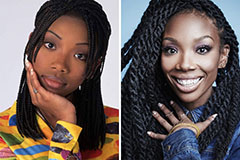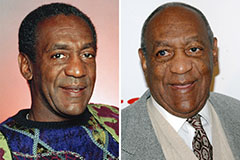Chinese culture is rich and diverse, encompassing a large array of traditional dance types, costumes, and creative expressions that have actually been passed down through generations. At the heart of this social heritage is the mesmerizing appeal of Chinese dance costumes, which play an important duty in showcasing the deep background and vibrant spirit of Chinese art.
A necessary element of numerous Chinese dance forms is the use of props, boosting the performance's visual phenomenon and providing depth to the storytelling. One such prop that is perfect to Chinese dance is the fan. Chinese fan dance, which has actually been practiced for centuries, combines the art of dance with the appeal of the folding fan.
The Chinese dragon dance is one more traditional art kind that astounds target markets and stands for social values. The elaborate designs on the dragon costume additionally improve its attraction, showcasing the virtuosity and workmanship that specify traditional Chinese social expression.
In the world of efficiency arts, the junction of traditional clothing and fighting styles is additionally significant. Wushu, a martial art with deep roots in Chinese culture, emphasizes grace, dexterity, and the fluidity of motion. While wushu professionals normally put on basic training clothes, performances frequently incorporate traditional elements, permitting professional dancers to use costumes that showcase their cultural heritage while taking part in dynamic displays of sports expertise. The unison of fighting styles and traditional clothing lights up the seamless mixing of art and self-control, celebrating centuries of Chinese artistry while personifying the spirit of physical excellence.
The value of traditional clothing extends past simple aesthetic appeals; it also envelops the essence of national clothing and Asian costume. Various regions and ethnic teams within China boast their very own variations and styles of traditional dress, highlighting the nation's unequaled variety. Each ethnic minority, such as the Miao, Yao, or Tibetan people, functions unique clothing designs that are typically embellished with colorful needlework, intricate beadwork, and handcrafted devices. These garments commonly offer not just as everyday wear however can additionally mark considerable life occasions, such as celebrations and wedding celebrations. The beauty of these costumes is that they can narrate concerning the wearer's identity, customs, and social heritage, weaving a rich tapestry of the multifaceted background of China.
For traditional dancers, costumes are oftentimes custom clothing made particularly for efficiency, tailored to boost the aesthetic impact of their motions. Costume style plays a crucial function in dance, with the choice of products, colors, and patterns all very carefully considered to stimulate the desired emotions and styles of the efficiency.
Through dance, costume, and different imaginative expressions, the charm of Chinese society remains to reverberate with individuals of all backgrounds and ages. The art of carrying out, embellished in fancy costumes that inform tales of check here the past, becomes a bridge between generations. Each professional dancer, whether performing the lion dance, participating in the stylish circulation of wushu, or sharing themselves through the art of fan dance, breathes life into olden practices that commemorate resilience, unity, and the enduring human spirit.
The exploration of traditional Chinese dance and costumes additionally invites a deeper recognition of the meaning fundamental in shades and patterns, which show the approaches and worldviews loved by Chinese culture. As seen in the value of shades, red signifies excellent lot of money and joy, while blue often represents elegance and tranquility. Recognizing the social context of these components urges better regard for the art kinds and their professionals, highlighting the value of social conservation and the power of storytelling through dance and clothing.
The beauty of traditional Chinese dress prolongs past efficiency, infiltrating daily life and society. During such parties, it is common for individuals to put on traditional outfit that straightens with the festival's styles, better uniting the community through a shared appreciation of their cultural heritage.
In a globalized world, the ongoing recognition for and expedition of traditional Chinese clothing and performances serve as a suggestion of the importance of cultural identification. As artisans and musicians function to revive these ageless customs, they enlighten brand-new generations about their heritage, promoting a sense of satisfaction and link to their origins. Traditional dance and costume not just delight yet also carry the weight of historical narratives, lessons for future generations, and a tank of common social understanding.
In addition to the abundant history of traditional clothing, Chinese dance offers as a powerful expression of social identification. One of the most visually fascinating forms of Chinese efficiency art is the lion dance, which typically accompanies parties such as the Lunar New Year and other cheery events.
In conclusion, Chinese dance costumes, ancient clothing, and the many vibrant efficiencies envelop a rich heritage that proceeds to enchant and influence both target markets and entertainers alike. From the breath-taking here visuals of lion and dragon dances to the refined elegance of fan dances, Chinese society is a substantial ocean of creative expressions that incorporate centuries of tradition. The national clothing shows a variety that can only be found in a country as extensive and complex as China, showcasing the special tales and identities that dwell within each ethnic group. As time marches ahead, the commitment to protecting these practices via efficiency art, costume design, and cultural celebrations guarantees that the vibrancy of Chinese culture lives, captivating hearts and minds worldwide.
 Tahj Mowry Then & Now!
Tahj Mowry Then & Now! Brandy Then & Now!
Brandy Then & Now! Shane West Then & Now!
Shane West Then & Now! Kane Then & Now!
Kane Then & Now! Bill Cosby Then & Now!
Bill Cosby Then & Now!